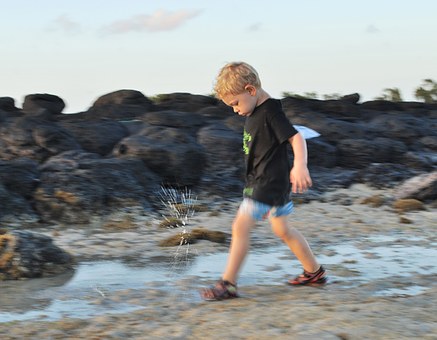Domestic Violence Effect on Children and Young Adults

Domestic Violence Effect on Children and Young Adults
Domestic violence is a common term within social discourse and this is believed to be substantially attributed to its frequent occurrence. The term has come to almost be synonymously linked to men beating women. Roughly, estimates in the United States alone suggest that close to two million women are terrorized and violated by male partners, predominantly husbands. The nature of violence ranges from brutal physical abuse, cold emotional wars and sexual violence. Increasing reports of domestic violence turned to death are reported widely in the media across all the continents (Capell & Heiner, 1990). Psychology studies suggest that men use violence against women in their pursuit of control. Other forms of domestic violence abound within all type of couple relationships including cohabiting, dating relationships, marital, opposite and currently same gender relationships. Due to the broad nature of domestic violence, this study will attempt to look at the effects of such violence to kids as they develop to adolescence and young adulthood. There is an increasing evidence of young children who are victims of witnessing or being involved in such violence. It is a common belief in Psychology that exposure to domestic violence contributes significantly to social, cognitive, emotional and physical dysfunctions among victims.
Target Group and Issue
For the purpose of this study, children and young adults will be analyzed as the most vulnerable lot that gets caught up in repeated case of domestic violence. Historical evidence suggests that domestic violence is not a new phenomenon. Men and women in intimate relationships have in the past fought, battered and engaged in emotional confrontations against each other for a longtime. When such violence has occurred in the past, the partners in the relationships were seen as the victims while the children were simply ignored unless when hurt in the confrontation. They have hence been silent victims of violence and this placed them at a disadvantage since no attention was accorded to such victims. Children are normally unintended victims of violence though there is significant evidence to show that they are normally present during times of violence. Children witness of violence in psychology is defined as the physical presence of a child within visual distance when the violence occurred. A child who witness domestic violence in most cases is a credible witness and there is possibility of the child taking in all the details because of the emotional attachment to the parties involved. Studies in Psychology suggests that the core of the evidence that a child remembers of violence is the central and most gory act such as the blast of a gun or the plunge of a knife and the eventual consequences such as screaming and blood spurting. Evidence of children witnessing murder of their parents during violence is not very common. According to Peled (1993) most children are more prone to witness beatings which sometimes are brutal and fatal. There is an aspect of children witnessing violence where they may not observe but hear the ensuing commotions among partners. For instance, a child sleeping on a bedroom next to the parent can vividly hear their fights when shouting to each other. According to Ganley & Schechter (1996), children may experience adult violence through other ways which include; holding a child in hostage in attempts to lure the mother, using the child as a weapon or defense during violence, threatening a child, or involving the child to spy either on the mother or the father. Other additional ways include; psychological insults and abuses like when one partner keeps blaming one parent for the woes in the family in the presence of the kids or even more crudely, when abusive parents force kids to watch their violence acts. The aftermath of violence has also been recorded as possible causes of trauma, like when a child is forced to assist an injured mother or call the police to come and intervene. An attempt to explore witnessing of violence by kids hence is wide and should include all physical participation and the trauma associated with the aftermaths.

Literature review
Domestic violence in psychology is a wide area. This study will concentrate on the commonly known aspects of the vice such as fights, verbal abuse, fatalities that leads to death and aspects of threats in a family setting. The children considered in this study would basically include children above age 3 who are assumed to be able to witness and remember incidents. The study will encompass the age group between ages to young adulthood, a period in which a significant number of young persons may be living within the premises of their parents. When violence occurs within such settings, evidence in psychology suggests that it contributes significantly to problems in their different stages in growth (Capell & Heiner, 1990). For the sake of justifying this study, an attempt will be made to look at quantitative data that can be a pointer to the level of domestic violence and more importantly, the possible numbers of young people who witness such violence.
Statistics on numbers of children exposed to Domestic Violence
Significant number of children experience adult violence. Statistics widely used are based on studies done in 1984 and 1992. In 1984, according to Carson (1984), his study estimated 3.3 million children at the risk of being exposed to domestic violence. By then, it was estimated that that around 3 million US households were involved a domestic violence case within a year. The author of those statistics however pointed that the findings could have underestimated since they only cited violence that could have caused injury. A significant note in this finding was that economic position in a great way determines possibility of violence with poor families most likely to be involved in violence. Also, poor families most likely have more number of kids compared to relatively economic able families. A survey conducted in 1990 (Strauss & Geles, 1990) had asked adults whether they had been witnesses to domestic violence during their youth. Based on this study, statistics released in 1992 by Strauss (1992) estimated that over 10 million young adults may have been exposed to domestic violence in any given year. The study also statistically estimated that over a third of American adolescents could have witnessed violence, some being present in several instances. According to Silvern et al. (1995) who had carried out a sample survey of college students found out that 118 out of 287 ladies and 85 out of 263 men had witnessed cases of domestic violence. These figures correspond to 41.1% and 32.3% for women and men respectively. Those surveys, though not comprehensive due to their limitations in time and geographical space, are great indications that the numbers of children who witness domestic violence are indeed catastrophic. It is to be pointed out here that children are also exposed to violence in other spectrum in the society which combined with their witness of domestic violence contributes significantly to the way they grow. Sources that have been cited as other possible sources of violence include violence within the community. This may be in the form of street gangs and other related violence that happens within the society. There is also considerable violence portrayed by the media which registers in the mind of growing children. According to Eth & Pynoos (1995) 10-20% of children witnessed homicide cases in Los Angeles within one year. According to Jenkins (1993) 25% of children who participated in a survey affirmed that they had witnessed either a murder or a shooting within their neighborhoods. Another survey among young people in Southside Chicago revealed that approximately 47% of youths interviewed were witnesses to stabbing and over two thirds (approx. 60%) had witnessed a shooting (Jenkins& Bell, 1994). There are also other significant studies which points to a possibility of more young people being exposed to violence. According to Eth & Pynoos (1985) behaviors associated with witnessing violence among young people include depression (Freeman et al., 2003), high levels of stress and acting out behavior (Osofsky et al., 1993). According to Durant et al. (1994) young people who witness crimes are more prone to develop and adopt use of violent, mean and aggressive tendencies. A study among school going children revealed that boys were more prone to witness violence in the community as compared to girls (O'Keefe, 1994). This study also suggested that well mannered children who portrayed stable behavior were less prone to witness cases of violence.
Increase in technology in today's world has significantly exposed children to accessing information from a wide variety of sources. A growing number of children today are on the internet and there is no limit to how much information they can access. According to Paik et al. (2002) young people exposed to media violence portray aggressive, uncouth and violent behavior. An aspect in this study show that men are more palpable in developing violent behavior as compared to women but both men and women exposed to movies and TV violence are likely to develop aggressive behaviors. In discussing the effect of violence on growing children's behavior, this study suggests that the role of all types of violence a child may be exposed to should be analyzed.
http://www.articlesbase.com/college-and-university-articles/domestic-violence-effect-on-children-and-young-adults-4478771.html Old Navy One Day Wonder Boy 2010 Expert Child Support Lawyer- Colorado Spring Childhood Obesity Facts Problems Of An Obese Child To do Fun and Play with Coloring Pages for your kids Spark Your Children's Imagination Employing Walkie Talkies Re: Dating advice for girls and boys for people who like a boy and likes a girl Save Your Obese Teenager Teenagers and Their Negative Relationships Panic Attacks In Children Really Do Occur! ADHD Diet For Children - Keep Their Focus With This Natural Alternatives Putting A Stop To Excessive Shyness In Kids How to Develop Your Child's Good Study Habits